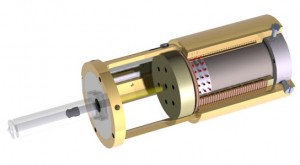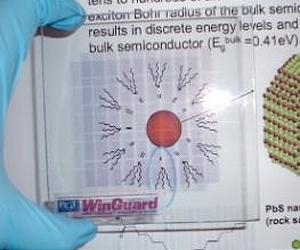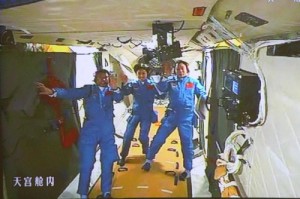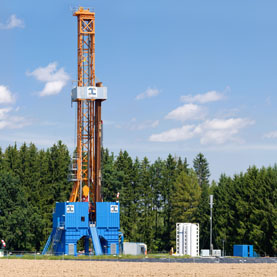Agriculture Update: Plant Recognition Technology Prototype Being Developed at University of Southern Queensland in Australia
Imagine a technology that detects weeds in a field and directs spray equipment to eradicate them. Well the National Centre for Engineering in Agriculture, University of South Queensland is trying to help sugarcane growers by developing a precision imaging system that can be integrated with existing spray systems to do just that. Being able to differentiate weeds like guinea grass and wild sorghum from sugarcane is not an easy task. The software technology needs to determine what is sugar cane and what is not by shape, colour and spectral analysis on the fly while in the field.

Biomedicine Update: Star Trek-Like Needleless Injectors Are Here
If you remember Dr. McCoy on Star Trek then you remember the tricorder and the method used to inject medication into crew members after they encountered hostile aliens on planets and required patching up. Well Massachusetts Institute of Technology has developed a device to deliver drugs through a high-pressure jet without a needle. The device can be programmed to deliver variable drug doses, using different levels of pressure to compensate when a patient is a baby or an adult, and to various depths under the skin. For people doing frequent self-injections such as diabetics this could prove far more comfortable. The researchers are experimenting with a version of the device for drugs in powdered form by having the device vibrate making it possible for the powder to be delivered through the skin. Unlike serum vaccines, powdered medications do not require cold storage meaning they can be administered anywhere without refrigeration.

Climate Change Technology Update: Carbon Capture May Lead to Earthquakes
Princeton University has published a study in the journal of Environmental Science & Technology about the potential dangers of underground storage of CO2 in deep saline aquifers. That’s because there may be an overlap with shale-gas production areas. Fracking for shale gas in Arkansas, Colorado, New Mexico and Ohio recently led to a number of small earthquakes. The Princeton study noted that the fissures created in cap rock above aquifers could make these reservoirs unfit for sequestration.
Meanwhile Stanford University scientists have published a paper in the journal PNAS noting that carbon injections could trigger larger and more destructive earthquakes particularly in areas at the boundaries between tectonic plates. Stanford researchers have identified 600 safe areas in locations in Texas, the Middle East, the North Sea and Western Australia that provide the right geology for carbon capture and sequestration (CCS). The challenge for CCS is to match up carbon producing plants with these safe injection sites without incurring significant transportation costs.
Energy Update: Making Solar Cells Invisible
What if you could make solar cells transparent so they could serve as both windows and photovoltaic collectors. New Energy Technologies is the developer of see-through solar cells. Called SolarWindow(TM), the technology can be installed in commercial and residential buildings as a replacement for regular glass. The company has also developed flexible solar films which can be applied to existing windows. The most recent development is a manufacturing breakthrough making it possible to produce the product in ambient temperature environments.

Space Update: China Takes Their Next Steps in Human Spaceflight
This has been a week to remember for China’s space program with the successful launch of Shenzhou-9 with 3 taikonauts on board, one of them, China’s first woman in space. China calls their program, Project 921. The “1” was sending a taikonaut into low-Earth orbit. The “2” is the current spaceflight involving a rendezvous and docking with another Chinese orbiting module, the Tiangong-1 space lab. And the “9” is the final phase, to place a Skylab-sized space station in low-Earth orbit.
China has exhibited great patience in the steps they have taken from their first flight to this week. LIke all things in China there is a 5-year plan and without an ideological space race to push the agenda the program is carefully unfolding.
China’s ultimate goal is to send humans back to the Moon between 2020 and 2030. Between the Moon mission and now China will send robots to do their exploring while developing human spaceflight experience in low-Earth orbit.

Author’s Note: If you want to automatically receive notification of new blog postings from 21st Century Tech note that you can do this now by clicking on the link provided near the top right of this web page. Thanks for reading and please come back often.










tree identification by leaf
Thanks
Tom
Oops I pressed the post button too quickly. I meant to refer you to a site that has a technology that teaches instant recognition techniques for a lot of applications. Specifically they have a product that teaches tree identification by leaf and Woody Plants recognition.
Thanks
Tom